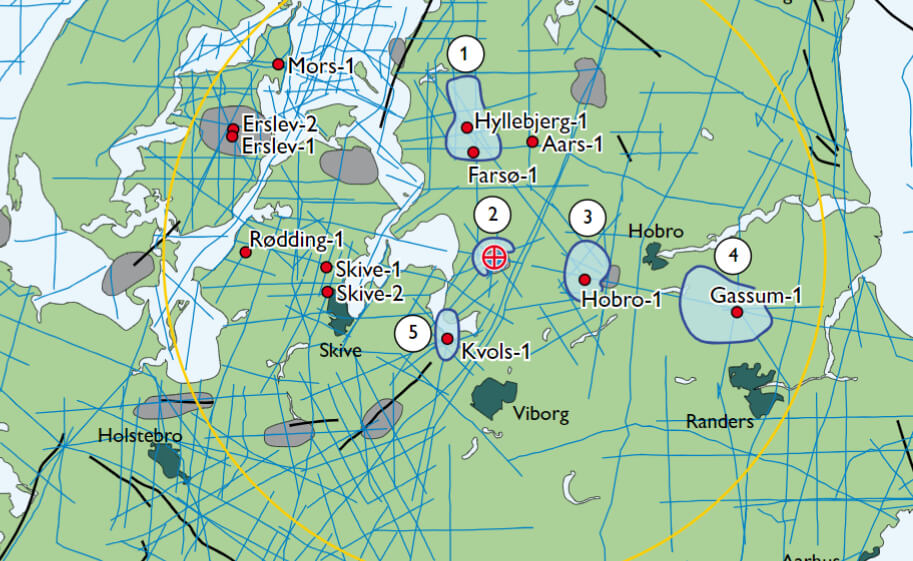
How to Cite
Share
Abstract
This study is based on a feasibility study for the Danish Energinet. dk to identify potential formations for brine storage near the gas storage facility at Lille Torup, northern Jylland, Denmark (Fig. 1; Hjuler et al. 2017). Located on top of a salt structure, the gas storage facility comprises seven caverns, which have been washed out by circulating water in the salt dome. One cavern contains c. 520.000 m3 of intrusive brine that must be disposed of in order to increase the storage volume for gas. One option is to inject the brine into the subsurface if a target with appropriate storage properties can be identified, but it is a prerequisite that the stored brine does not compromise freshwater reservoirs. Due to cost considerations, the brine storage should be situated within a radius of 50 km of the gas storage facility and at a depth not exceeding 2000 m. Based on the national geothermal research conducted during the last decade, a number of sandy formations are considered potential storage reservoirs (Fig. 2; e.g. Mathiesen et al. 2009; Vosgerau et al. 2016). Around Lille Torup, these include the Bunter Sandstone/Skagerrak, Gassum, Haldager Sand and Frederikshavn formations where the two former formations are discarded due to present-day burial depths exceeding 2000 m. In addition, the Chalk Group is considered a potential storage formation due to its importance as a hydrocarbon reservoir in the North Sea, however, due to risk of leakage to the younger sediments and risk of environmental issues, the chalk was discarded as potential storage zone.
How to Cite
Share
Downloads
Editors Adam A. Garde, Ole Bennike and W. Stuart Watt
The 22 contributions in this issue of Review of Survey activities demonstrate the broad field of activities performed by the Geological Survey of Denmark and Greenland and external partners.
Seven papers on Danish geology comprise an investigation of reservoir sandstones for oil [...]










